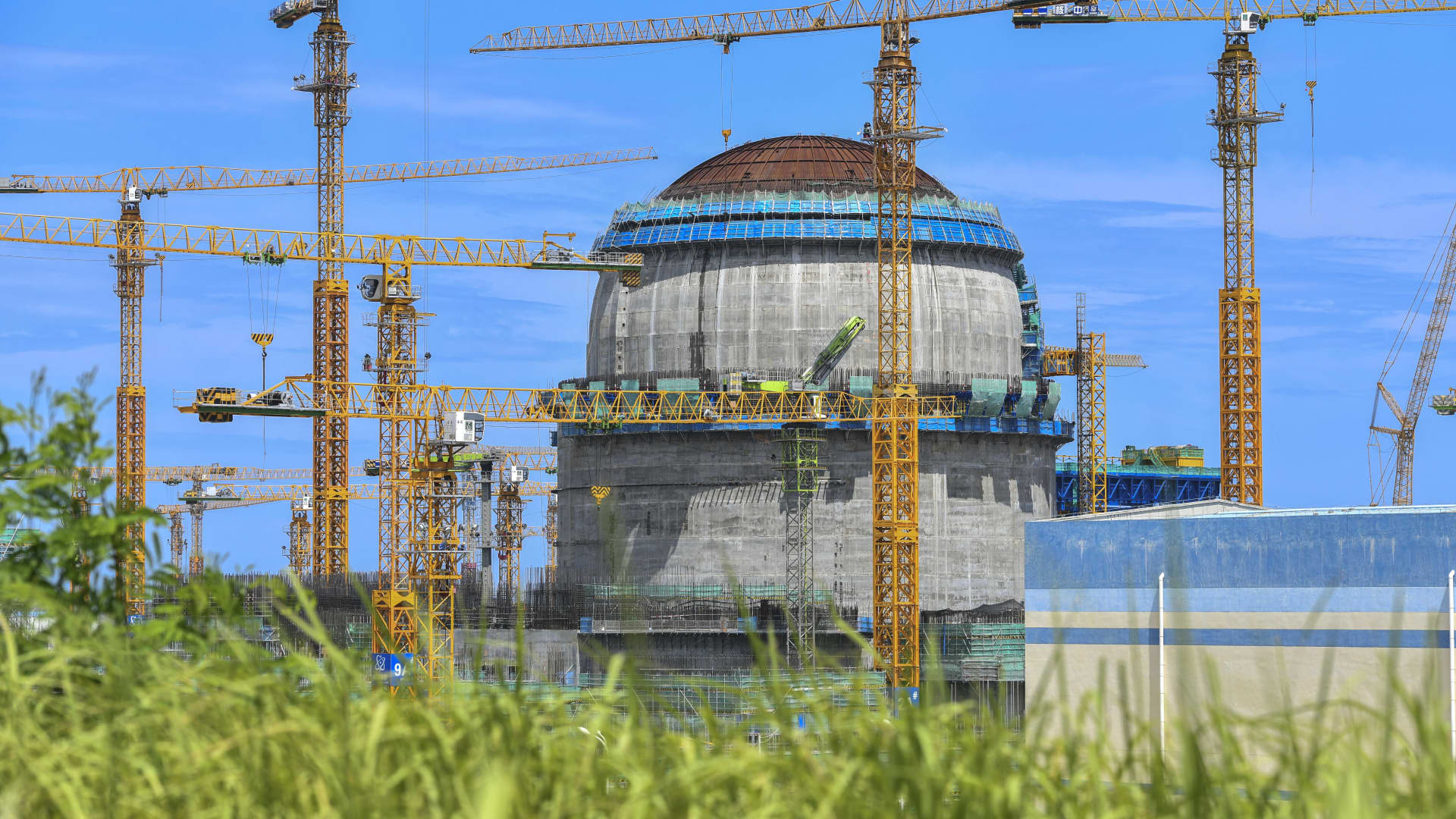Cranes loom large at the construction site of the second phase of the Changjiang Nuclear Power Plant in Changjiang Li Autonomous County, Hainan Province, China, a joint venture of state-owned China National Nuclear Corporation (CNNC) and China Huaneng Group. It is clear that China has emerged as the global leader in new nuclear construction. With 21 nuclear reactors currently under construction, totaling over 21 gigawatts of electricity generation capacity, China surpasses any other country by a margin of two and a half times. India follows closely in second place, with eight reactors under construction that will generate more than six gigawatts of electricity. Turkey secures third position, with four reactors under construction and a projected capacity of 4.5 gigawatts. In stark contrast, the United States has only one nuclear reactor under construction at the Vogtle power plant in Georgia, capable of generating just over one gigawatt.
Experts acknowledge China’s current status as the de facto world leader in nuclear technology. According to Jacopo Buongiorno, a professor of nuclear science and engineering at the Massachusetts Institute of Technology, and Kenneth Luongo, president and founder of the Partnership for Global Security, China has established itself as the determined and pacing global leader in nuclear ambition. However, this was not always the case. The United States historically dominated the nuclear industry, currently operating 93 nuclear reactors with a total capacity of over 95 gigawatts, surpassing all other countries by a significant margin. France follows with 56 operating reactors and a capacity of more than 61 gigawatts, while China ranks third with 55 reactors and a capacity exceeding 53 gigawatts. It is agreed that the United States began losing its global dominance in nuclear energy in the mid-1980s, just as China was beginning to build its first reactor.
China’s rise as a nuclear leader can be attributed to its increasing demand for power to support its rapidly growing economy. While over 70% of existing nuclear capacity is located in countries within the Organization for Economic Cooperation and Development (OECD), almost 75% of the nuclear reactors under construction are in non-OECD countries, with China leading the pack. As China’s energy output has surged, reaching 7,600 terawatt hours in 2020, the need for clean electricity generation has become undeniable. Coal, previously relied upon to meet energy demands, has resulted in severe air pollution. Nuclear energy, on the other hand, offers a cleaner alternative, free from greenhouse gas emissions. China has thus turned to nuclear power to produce significant amounts of clean energy swiftly. In fact, China has set a goal of expanding its nuclear capacity to 150 gigawatts within 15 years, a historical accomplishment and demonstration of its commitment to nuclear energy.
China’s dominance in the nuclear industry can also be attributed to its government’s strong control and support within the sector. By establishing a state-supported and financed industry, China has been able to build multiple nuclear units at a lower cost. This, coupled with their commitment to technological development, has provided China with a competitive advantage. However, as China looks to export its nuclear technology, concerns arise regarding the geopolitical and economic dependence on China that such projects may create. Similar concerns apply to Russia as well.
While the United States had previously lagged in nuclear energy development, it is now taking steps to regain its former dominance. There has been a reversal in the political opposition to nuclear power within the country, with bipartisan support for the industry. The US is focusing on scaling up the market for small modular and advanced reactor technology, as well as building fuel enrichment capacity. By investing in smaller, modular designs, the US aims to reduce costs and construction time. The success of these new technologies, including small modular reactors and microreactors, remains uncertain but holds the potential for the US to catch up in the nuclear field.
In conclusion, China has emerged as the global leader in new nuclear construction due to its rapid economic growth and increasing energy demands. Its commitment to nuclear energy offers cleaner electricity generation to combat air pollution and contribute to global climate change mitigation. While the United States seeks to regain its dominance through advancements in small modular and advanced reactor technology, the future of the nuclear industry remains dynamic and unpredictable.
Denial of responsibility! VigourTimes is an automatic aggregator of Global media. In each content, the hyperlink to the primary source is specified. All trademarks belong to their rightful owners, and all materials to their authors. For any complaint, please reach us at – [email protected]. We will take necessary action within 24 hours.


